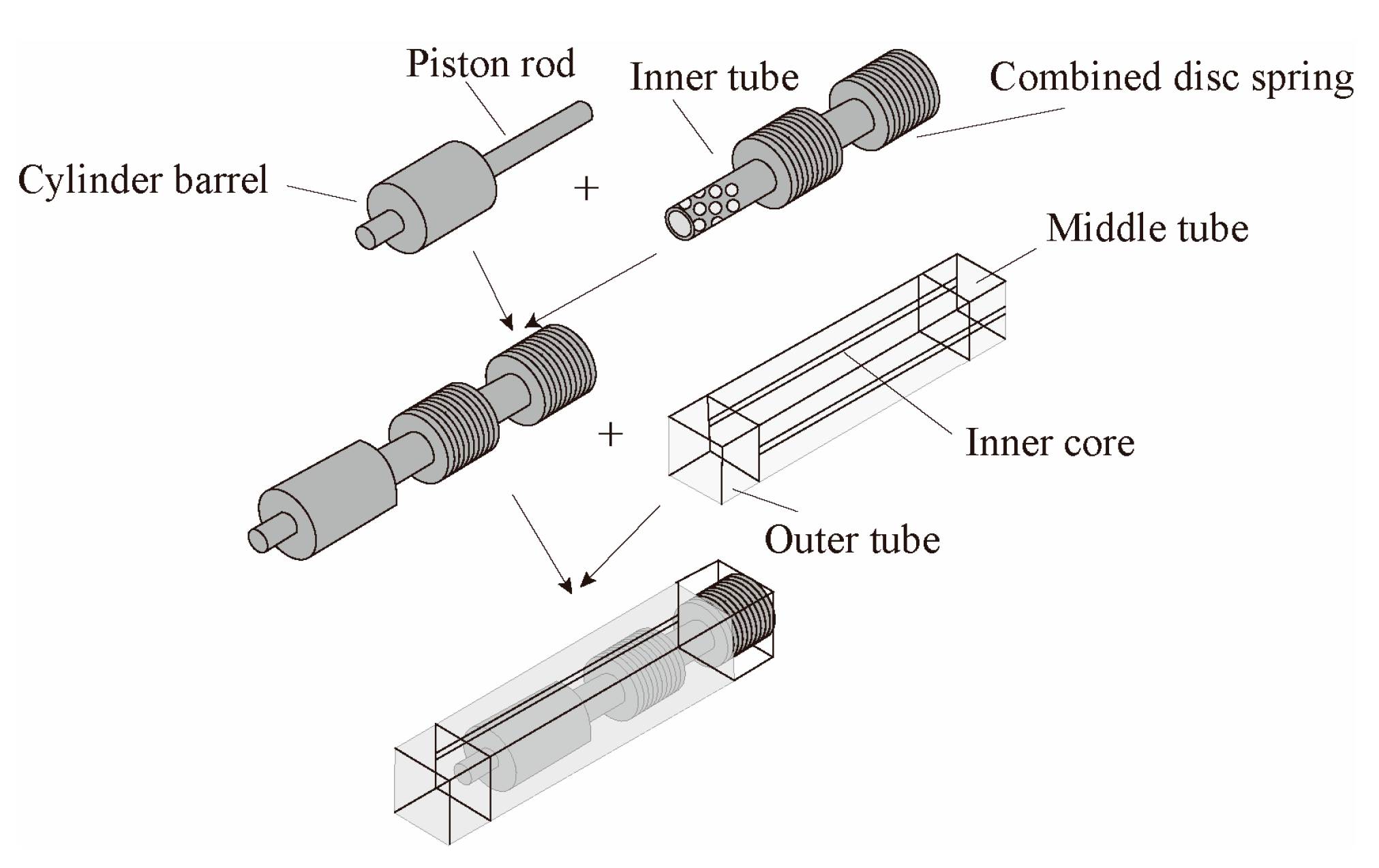
| Version | Summary | Created by | Modification | Content Size | Created at | Operation |
|---|---|---|---|---|---|---|
| 1 | Xiaoli Li | -- | 1488 | 2023-04-07 01:48:30 | | | |
| 2 | Catherine Yang | Meta information modification | 1488 | 2023-04-07 02:42:06 | | |
Video Upload Options
Modern cities are becoming more and more dependent on transportation with the rapid growth of the population and the development of the economy. As a traffic lifeline, once a bridge is damaged in an earthquake, traffic will be hindered, and restoring and rebuilding the bridge will take a long time, which will affect the daily life of drivers and locals. Therefore, bridge seismic problems cannot be ignored. One of the most widely used damping methods used to mitigate the seismic responses of bridges in recent years is the application of buckling-restrained braces (BRBs). Due to their stable mechanical properties, simple construction, and simple designs, BRBs are effective seismic dampers that are gradually being applied in the study of seismic bridges to improve their seismic capacities. With the development of engineering technology, the structure of BRBs is constantly being updated, and experimental and theoretical research on them has gradually attracted increasing attention.
1. Comparison of BRB with Other Seismic Isolation Components

2. Combining BRBs with Other Seismic Isolation Components
References
- Wang, F.; Ji, R.; Xia, X. Research on Influence of Pier Height of Low-Tower Cable-stayed Bridge on Seismic Isolation Performance of Friction Pendulum Bearing. Highw. Eng. 2022, 6, 1–9.
- Hai, C. Study on Performance of Seismic Isolation Bearing of Seismic Excitation Bridge Foundation. Highw. Eng. 2018, 43, 108–112.
- Li, J.; Chen, G. Method to compute live-load distribution in bridge girders. Pract. Period. Struct. Des. Constr. 2011, 16, 191–198.
- Yan, S.; Dong, W.; Jan, H.; Zhi, S.; Zhan, Z. Application status of seismic isolation for bridges and its development tendency. Earthq. Eng. Eng. Vib. 2017, 37, 118–128.
- Marco, F. Definition and Validation of Fast Design Procedures for Seismic Isolation Systems. Vibration 2022, 5, 290–305.
- Alper, K.; Carlo, C. Reducing the seismic vulnerability of existing elevated silos by means of base isolation devices. Eng. Struct. 2017, 143, 477–497.
- Young, K.; Hasan, S.; Jong, H. Seismic Performance Evaluation According to HSS and CFST Columns of 3D Frame Buildings with Rubber Friction Bearing (RFB). Materials 2022, 15, 1281.
- Afshin, M.; Dario, D.; Hamid, D. Seismic Rehabilitation of Steel Arch Bridges Using Nonlinear Viscous Dampers: Application to a Case Study. Pract. Period. Struct. Des. Constr. 2021, 26, 04021012.
- Li, C.; Liu, Y.; Li, H.N. Fragility assessment and optimum design of a steel–concrete frame structure with hybrid energy-dissipated devices under multi-hazards of earthquake and wind. Eng. Struct. 2021, 245, 112878.
- Yan, S.; Zheng, Z.; Hong, Q.; Jian, H.; Zhi, S. Toggle buckling-restrained brace systems and a corresponding design method for the seismic retrofit of bridge bents. Eng. Struct. 2020, 221, 110996.
- Qun, L.; Zhao, G.; Shi, Z.; Chang, W.; Xiang, R.; Xing, W. Performance-Based Seismic Design of Hybrid Isolation Systems with Gap-T unable BRBs for Bearing-Supported Bridges. Symmetry 2022, 14, 1373.
- Zhong, G.; Han, Y.; Jian, L. Lateral Isolation System of a Long-Span Cable-Stayed Bridge with Heavyweight Concrete Girder in a High Seismic Region. Bridge Eng. 2017, 22, 04016104.
- Zi, L.; Li, L.; Yang, Z.; Yu, L. Research on the influence law of Lock-Up Self-Centering Buckling-Restrained Braces on bridge performance. World Earthq. Eng. 2020, 36, 146–154.
- Lanning, J.; Benzoni, G.; Uang, C.M. Using Buckling-Restrained Braces on Long-Span Bridges I: Full-Scale Testing and Design Implications. Bridge Eng. 2016, 21, 4016001.
- Lanning, J.; Benzoni, G.; Uang, C.M. Using Buckling-Restrained Braces on Long-Span Bridges. II: Feasibility and Development of a Near-Fault Loading Protocol. J. Bridge Eng. 2016, 21, 04016002.
- Upadhyay, A.; Pantelides, C.P. Comparison of the Seismic Retrofit of a Three-Column Bridge Bent with Buckling Restrained Braces and Self Centering Braces. Struct. Congr. 2000: Adv. Technol. Struct. Eng. 2017, 2017, 414–423.
- Montazeri, M.; Ghodrati, G.; Namiranian, P. Seismic fragility and cost-benefit analysis of a conventional bridge with retrofit implements. Soil Dyn. Earthq. Eng. 2021, 141, 106456.
- Hui, D.; Xiu, D.; Qiang, H.; Kai, B.; Hong, H. Hysteretic performance of RC double-column bridge piers with self-centering buckling-restrained braces. Bull. Earthq. Eng. 2019, 17, 3255–3281.
- Zi, L.; Dong, W.; Lei, C.; Lei, T. Seismic response of bidirectional isolation bridges using BRBs under near-fault ground motions. World Earthq. Eng. 2020, 36, 155–162.
- Wei, L.; Zhao, H.; Yu, L. Application of BRB in seismic isolation of curved bridges under near—Fault earthquakes. Earthq. Resist. Eng. Retrofit. 2020, 42, 130–136.
- Yan, S.; Zhang, Z.; Hong, Q.; Xiang, Z.; Xiong, Y. Lateral Seismic Response and Self-Centering Performance of a Long-Span Railway Continuous Beam-Arch Bridge. Shock. Vib. 2020, 2020, 4547532.
- Yan, S.; Zhan, Z.; Jian, H.; Bao, C. Self-centering performance of long-span railway continuous beam-arch bridge subjected to near-fault ground motions. J. Harbin Eng. Univ. 2020, 41, 390–396.
- Wei, B.; Jun, W.; Chen, X.; Tao, P.; Jin, G. Damping mechanism and influential parameters of a hybrid shock absorption system for railway simply-supported girder bridges with unequal spans. J. Vib. Shock. 2022, 41, 2.




